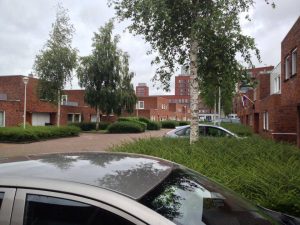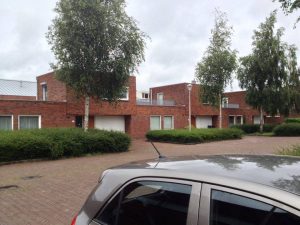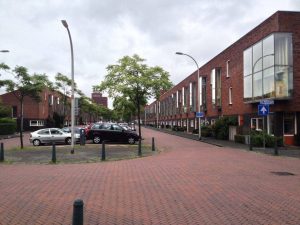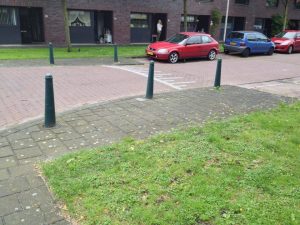Today we started off by having lectures regarding to the iTHRIVE software which we were to use on our group projects. iTHRIVE uses sustainability benefits of developments in a community to provide a score for that community. It consists of an excel spreadsheet in which items such as density, service proximity, land use mix, street connectivity, road network characteristics, aesthetics, parking, etc are recorded to provide this score. Also, in this lecture, we talked about how the design vehicle and the design speed are the two factors which dictate a road design.
We then set off to Ypenburg, a growth city of the Hague which was constructed in the 90’s, hence another example of Dutch modern planning in action! 




I really thought that Ypenburg exemplified what a suburb should look like. The woonerfs in the residential areas were the best I’ve seen in the Netherlands thus far. There was a large amount of foliage and it was very evident that bicyclists and pedestrians had the right of way based off the many traffic calming measures evident throughout the area. The only thing I did not like is that some of the apartment buildings had middle of the street parking as in the picture below, I think it is better for the vehicles to be behind the apartments if possible. The above pictures depict the area as well as some of the traffic calming and pedestrian safety measures in place to make for a safe community.
That afternoon, Philip Wijers from GATSO came and lectured us on automated enforcement. He first talked to us about how to discourage vehicles from driving around in city centres in order to make the centres more cyclist and pedestrian friendly. Among some of the measures applied to achieve this include making parking in the centre costly and limited as well as charging a fee for entering the city. He made a point that really stood out to me, “a 1% reduction in mean speeds leads to a 2% reduction in injury accidents, a 3% reduction in serious injuries, and a 4% reduction in deaths”. I wonder if in Kelowna if minor adjustments would be made to the speed limit, even going down to 40 or 45 in a 50 km/hr zone, how many injuries and deaths could be prevented. He concluded his talk with a focus on speed cameras and how they work in the Netherlands. He showed us a new system which I had never seen before that is used for enforcing the speed limit. It was called something like the “average speed camera” which worked pretty much by taking a picture of a car at one point along a highway and then taking another picture of it somewhere further down and then calculating the time it took in between the two cameras. I think this method is much more effective and wish it would be implemented more in Canada because just police with radar guns or a simple speed camera can be really easy to avoid as drivers can slow down past these systems and then once past, can resume speeding.